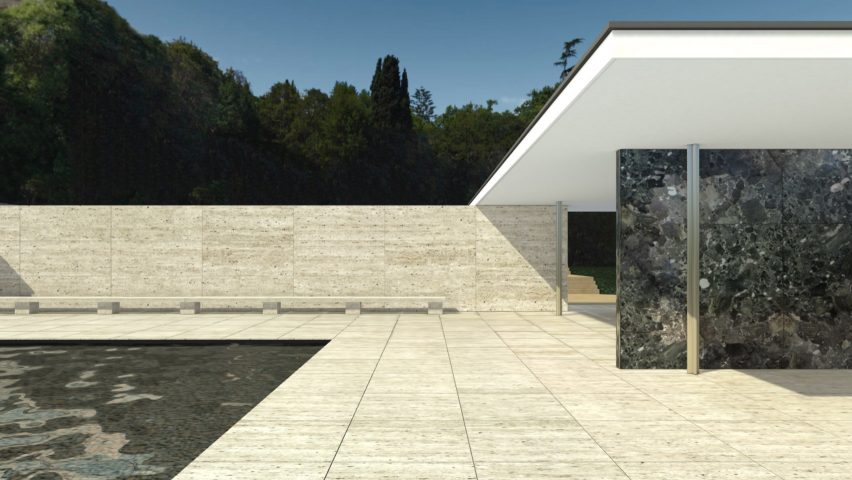
CL3VER launches virtual tour of Mies van der Rohe's Barcelona Pavilion
Those unable to visit Mies van der Rohe's iconic Barcelona Pavilion can now tour the building remotely through a virtual-reality experience created by architectural visualisation studio CL3VER.
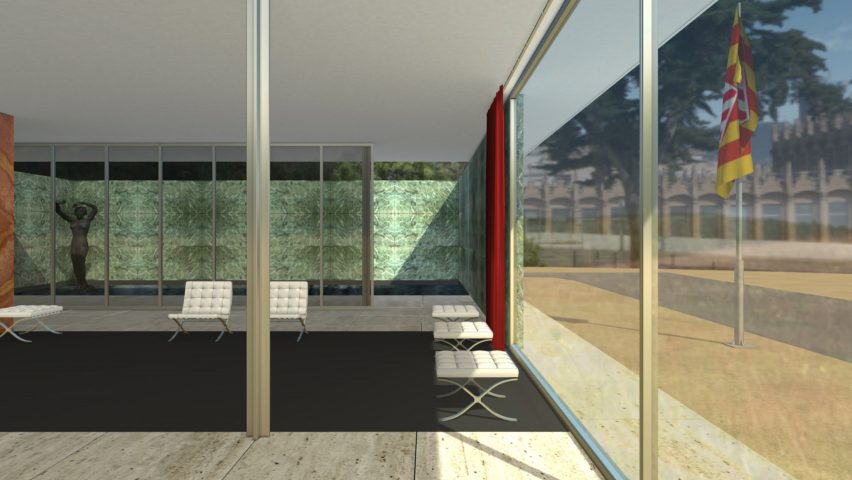
Barcelona-based 3D visualisation studio CL3VER worked with the Mies van der Rohe Foundation to create the virtual tour, which gives users 360-degree views of each aspect of the Barcelona Pavilion.
The tour is hosted on the websites of both the Mies van der Rohe Foundation and CL3VER.
Originally designed in 1929 by Ludwig Mies van der Rohe and Lilly Reich as Germany's national pavilion for the Barcelona Expo, the building is now considered a seminal work of the modern movement.
The structure was disassembled following the exhibition in 1930 and reconstructed on its original site outside Barcelona's National Palace in the early 1980s.
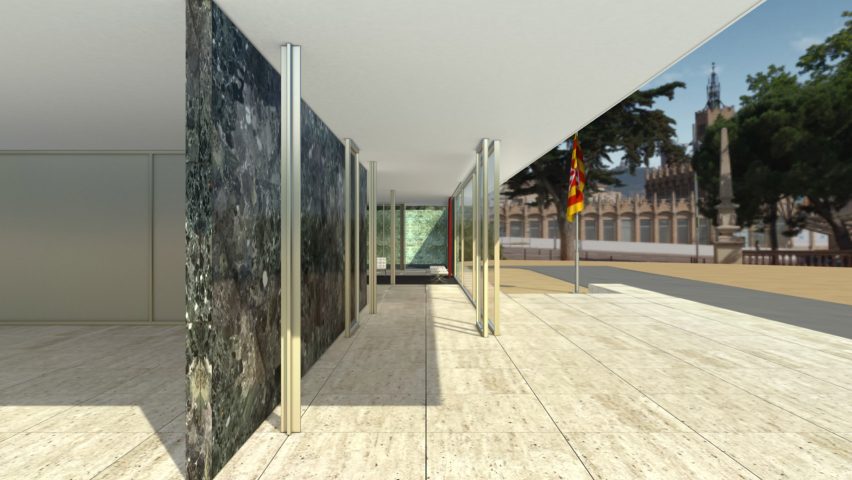
"Being able to have the most advanced technology allows us to provide better interpretive resources to show the cultural value of the Mies van der Rohe Pavilion," said Anna A Ramos Sanz, the director of the Mies van der Rohe Foundation, which was set up in 1983 to oversee the reconstruction of the pavilion.
"3D has a great value to contextualise and evaluate an architectural project both aesthetically and functionally because it offers an interpretive tour either complementary or alternatively to the face-to-face visit," added CL3VER.
Virtual visitors can either click and drag the screen for a 360-degree view of the building, or press arrow buttons to be led on a tour of the building through visuals.
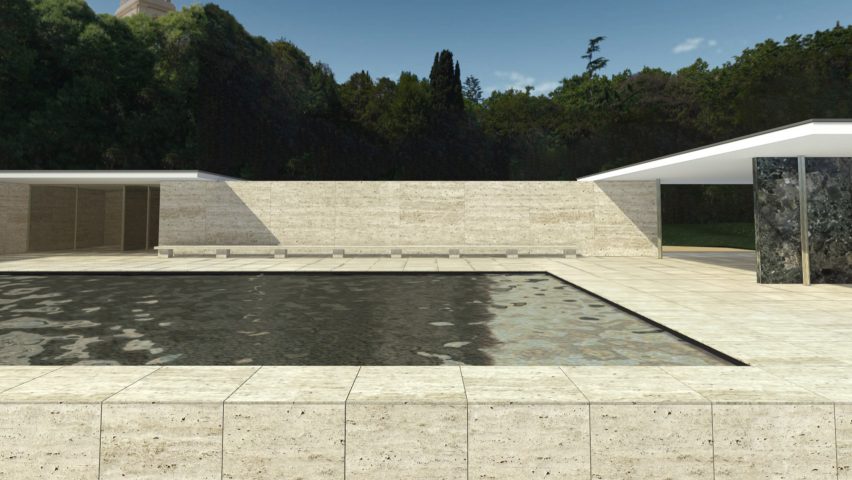
The tour begins at the foot of the pavilion's steps before zooming towards the pool and rotating towards the entrance, which is flanked by a slab of green marble and glazing. It also takes in a figurative sculpture by German artist Georg Kolbe, which stands in a pool of water.
Text overlays on each visual explain the history of the pavilion, from the choice of building materials – golden onyx, green marble, glass and travertine – to the Barcelona Chair Mies van der Rohe and Reich designed specifically for the space.
The Mies van der Rohe Foundation was set up by Barcelona City Council to restore the pavilion, and has since broadened its mission to include a range of awards, exhibitions and events that aim to elevate awareness of contemporary architecture.
In 2008, SANAA installed acrylic curtains in the pavilion, the following year Ai Weiwei filled its pools with coffee and milk, and in 2013 Andrés Jaque furnished the building with junk from its basement.
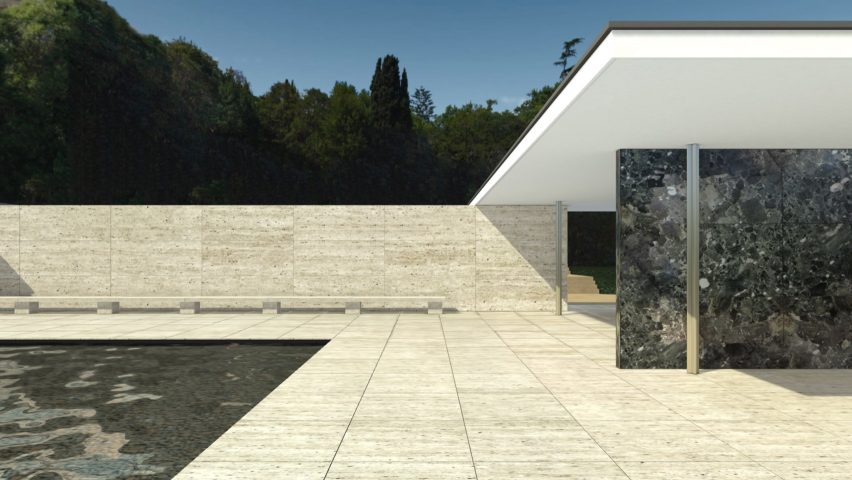
In 2016, Spanish architect Luis Martínez Santa-María installed a row of ten towering columns made from old steel drums in front of the pavilion – which can been seen in the virtual tour.
The columns are intended as a recreation of Les Quatre Columnes, a set of four Ionic columns created by Catalan architect Josep Puig i Cadafalch in 1919 but demolished just before the Barcelona Expo along with other Catalan monuments.
Mies van der Rohe, who is German-American, is considered one of the most significant architects of the 20th century.
His glass-box dwelling Farnsworth House is set to star in a feature film, which will follow the relationship between Mies van der Rohe and his client, Chicago nephrologist Edith Farnsworth. Mies van der Rohe will be played by Jeff Bridges, while Maggie Gyllenhaal will play Farnsworth.